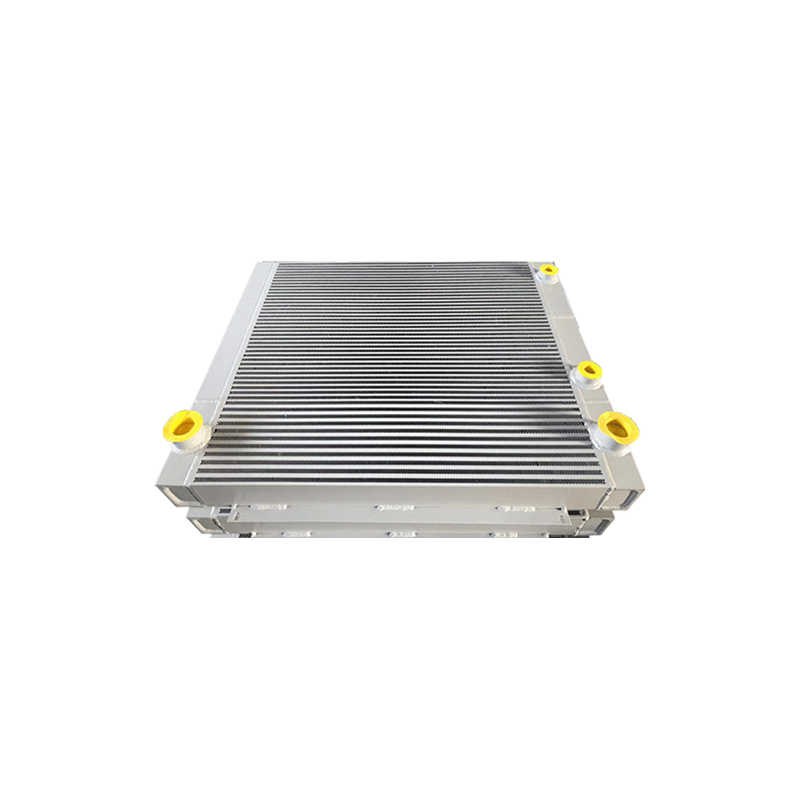 +86-13812067828
+86-13812067828
To ensure the long-term and efficient operation of Plate Fin Heat Exchanger in practical applications, multiple factors must be considered comprehensively, including design, material selection, operating conditions, maintenance management, etc. The following are several key aspects:
1. Material selection and corrosion resistance
Corrosion-resistant materials: When plate-fin heat exchangers work in high temperature, high humidity, or corrosive gas or liquid environments, it is crucial to select suitable corrosion-resistant materials. For example, materials such as stainless steel, titanium alloy, copper-aluminum alloy, etc. can improve the corrosion resistance of heat exchangers and reduce performance degradation caused by corrosion.
Surface coating: In some special environments, anti-corrosion coatings (such as galvanizing, ceramic coatings, etc.) can be used to protect the surface of the heat exchanger and extend its service life.
2. Regular cleaning and maintenance
Prevent scaling and clogging: During long-term operation, the heat exchanger may experience scaling, oil accumulation, or microbial growth, which will affect the heat exchange efficiency and increase the pressure drop. Therefore, it is very important to clean the heat exchanger regularly. Common cleaning methods include physical cleaning, chemical cleaning, or ultrasonic cleaning.
Determination of cleaning cycle: According to factors such as the properties of the fluid, working temperature and working time, a reasonable cleaning cycle should be formulated. For fluids involving solid particles, grease or chemicals, the cleaning cycle should be more frequent.
Check and replace fins: With the extension of the use time, the surface of the fins may be worn or deformed, affecting the heat exchange effect. During regular maintenance, the integrity of the fins should be checked and replaced or repaired when necessary.
3. Optimization of operating conditions
Reasonable control of fluid flow rate and pressure: Excessive flow rate and pressure will increase the wear of the heat exchanger and cause excessive pressure drop; too low flow rate and pressure will affect the heat exchange efficiency. Therefore, it is necessary to optimize the flow rate and pressure according to the specific working conditions to avoid the negative impact of long-term high pressure and excessive flow rate on the system.
Temperature control: Ensure that the fluid temperature is within the design range to avoid problems such as excessive temperature causing material fatigue or too low temperature causing freezing. In addition, an environment with large temperature fluctuations will aggravate the aging of the heat exchanger material and reduce its service life.
4. Earthquake resistance and pressure fluctuation resistance
Earthquake resistance design: In some applications (such as offshore platforms or mobile equipment), heat exchangers may face severe vibration or impact. Therefore, earthquake resistance needs to be considered during design to ensure the stability of the structure.
Pressure fluctuation control: Pressure fluctuations (such as water hammer) may cause damage to heat exchangers. Pressure fluctuations can be reduced by installing pressure stabilizing devices, gas buffers, etc. to ensure stable operation of the equipment.
5. Fluid filtration and pretreatment
Fluid filtration: If the fluid contains particulate matter, dirt or other contaminants, long-term use may cause blockage or scaling of the heat exchanger. A high-efficiency filter can be installed at the inlet of the system to reduce the amount of particulate matter entering the heat exchanger and reduce the risk of blockage and scaling.
Pretreatment technology: Some fluids (such as seawater or heavily polluted industrial cooling water) can use pretreatment technology, such as softened water or deionized water, to reduce the mineral content in the water, thereby reducing the possibility of scaling.

6. Monitoring and online detection
Real-time monitoring system: Install temperature, pressure, flow and vibration sensors to monitor the operating status of the heat exchanger in real time. This data can help to detect problems in a timely manner, such as flow rate changes, abnormal temperatures, or increased pressure drop, so that preventive measures can be taken.
Online cleaning detection: Use intelligent monitoring technology to timely determine the degree of scaling of the heat exchanger and optimize the cleaning cycle. Some advanced online detection technologies, such as ultrasonic sensors, can also detect scaling or corrosion inside the heat exchanger.
7. Optimize system design
Reasonable heat load distribution: The design should ensure that the heat exchanger can cope with the expected heat load and avoid overload during long-term operation. Excessive heat load will cause the surface temperature of the heat exchanger to be too high, increasing corrosion, scaling and other problems.
Waste heat recovery system design: To ensure efficient operation, the plate-fin heat exchanger can be combined with the waste heat recovery system to improve overall energy efficiency, reduce energy waste, and reduce system burden through waste heat utilization.
8. Deal with extreme operating conditions
In some special applications (such as aerospace, nuclear energy, etc.), the heat exchanger may face extreme temperatures, high radiation environments, or high pressure differences. In order to operate efficiently and long-term, special materials that meet these requirements must be used, and the system must be precisely designed and tested.
High temperature resistant materials: For example, in high temperature industrial or power generation systems, the use of materials that can withstand high temperatures (such as titanium alloys and ceramic materials) can increase the life of the heat exchanger.
9. Training and operator management
Operator training is also key to ensuring the long-term and efficient operation of the heat exchanger. The operator should understand the operating principle of the equipment, how to deal with common failures, and how to adjust and maintain the equipment without damaging it.
Ensuring the long-term and efficient operation of the plate-fin heat exchanger requires comprehensive consideration of multiple factors such as equipment design, material selection, cleaning and maintenance, operating conditions and system management. Through regular inspections, reasonable operation, timely cleaning and advanced monitoring technology, the service life of the equipment can be greatly extended and its efficiency in long-term operation can be guaranteed.